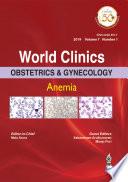Although the prevalence of anemia among women of reproductive age in Tanzania remains high, there have been documented improvements. It declined from 47.2% in 2004-05 to 40.1% 2010, but by 2016 it has risen again to 44.8%, according to the nationally representative Demographic and Health Surveys from those years. Women’s anemia can lead to many detrimental consequences, including decreased work productivity, mortality, postpartum hemorrhage, and adverse birth outcomes. Thus, it is important to document the factors that may have contributed to improvements in anemia status. Using a regression decomposition approach, which previously has been applied to identifying potential drivers of changes in stunting, we examine which improvements in the underlying determinants of anemia contributed to improvements in the overall prevalence of anemia among women of reproductive age in Tanzania. This study is the first known application of this methodology to understanding changes in the prevelance of anemia. Among all adult women, the largest contributers of change from factors we could include in our models were increases in wealth and education, use of hormonal contraceptives, and the decrease in the proportion of women who are currently pregnant or postpartum (i.e., from the decrease in fertility rates). Notably, use of hormonal contraceptives was least common among the poorest quintile. Additionally, change was attributable to reductions in infection, specifically fever and improvements in open defecation. Among older adolescent girls (15-19 years), the largest share in the improvements in anemia were attributable to education and wealth increases. Among postpartum women, we were limited by the sample size, but found that attending all four antenatal care visits and being administered medications to prevent malaria during pregnancy were important determinants of improved hemoglobin levels.
Although the prevalence of anemia among women of reproductive age in Tanzania remains high, there have been documented improvements.










